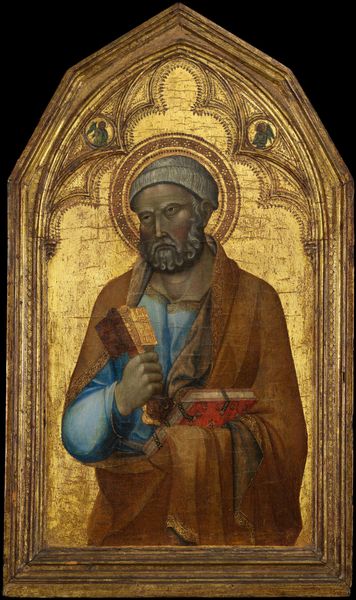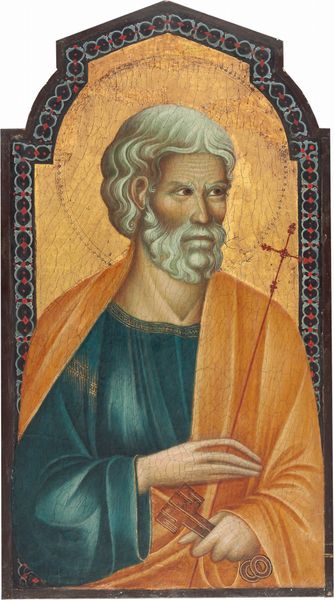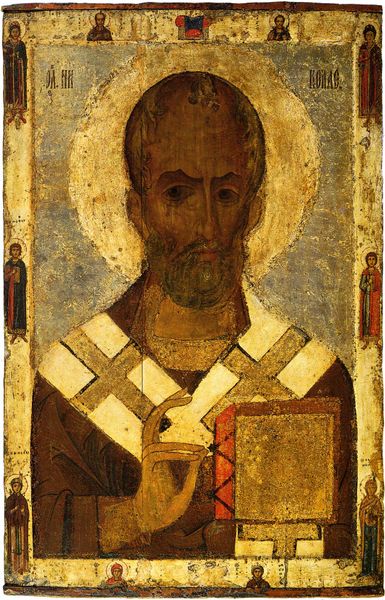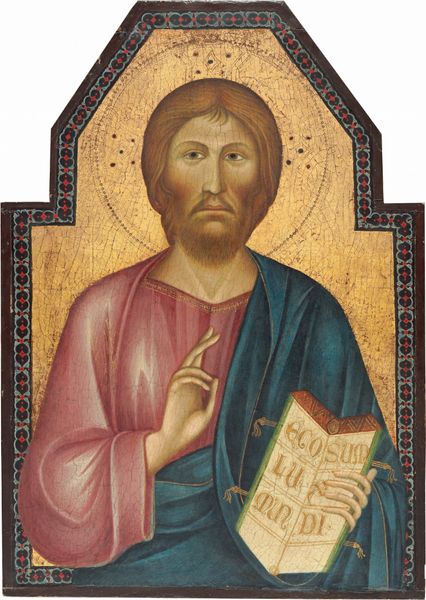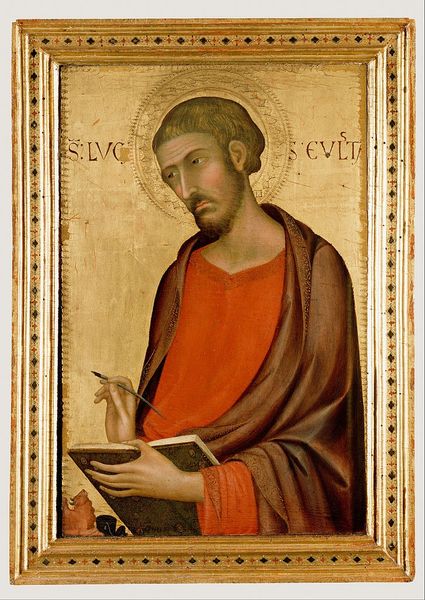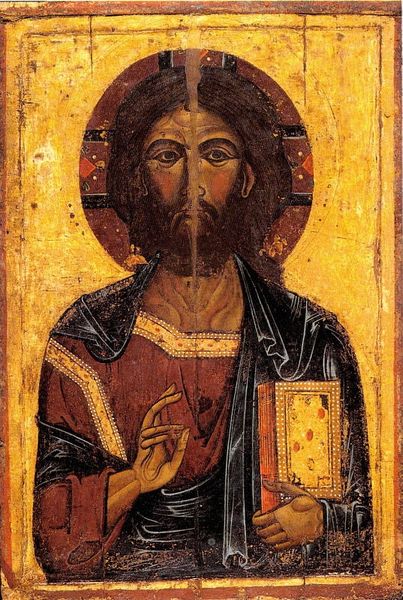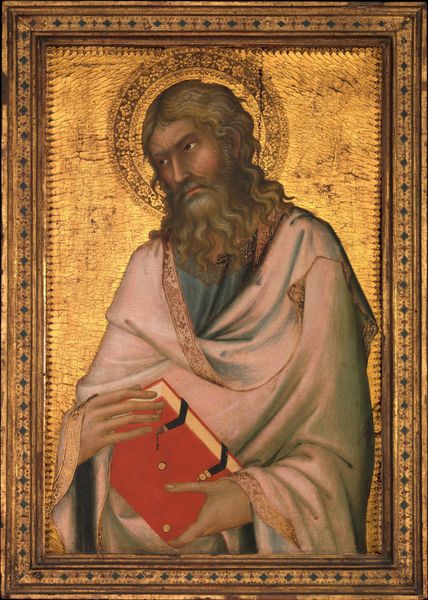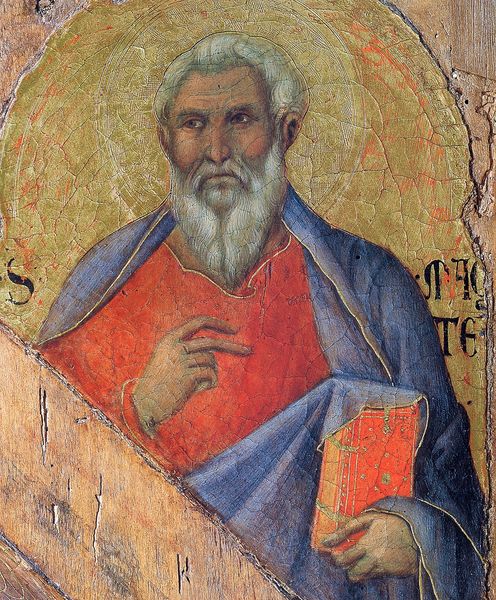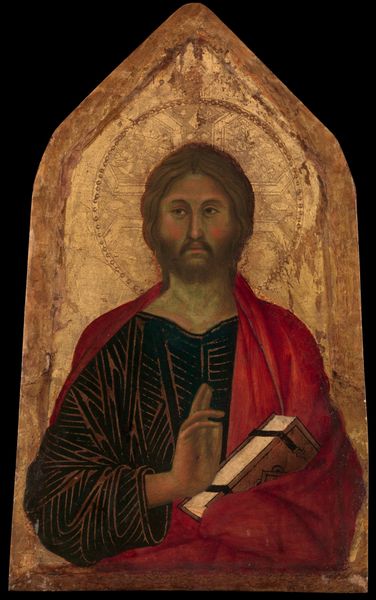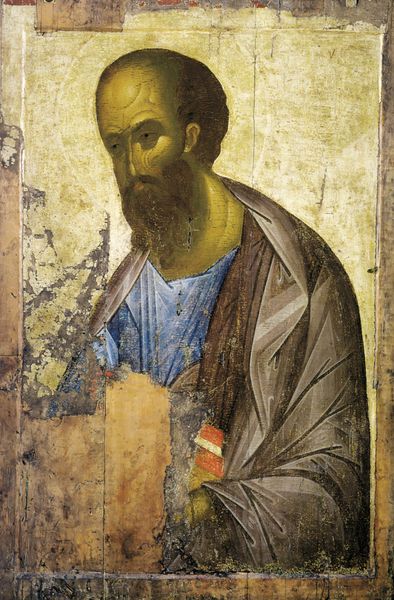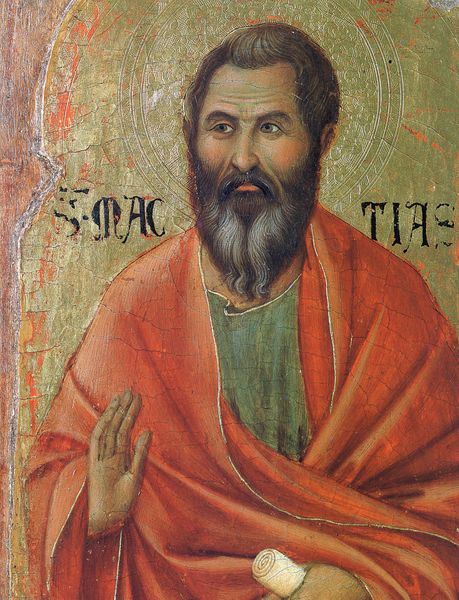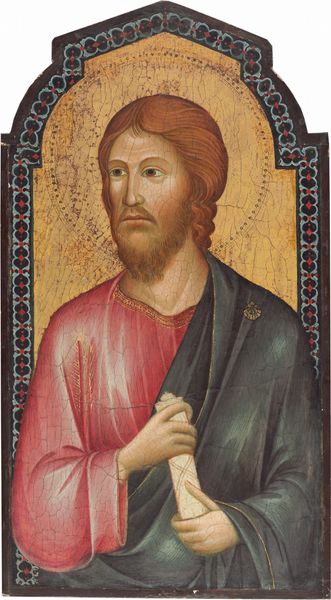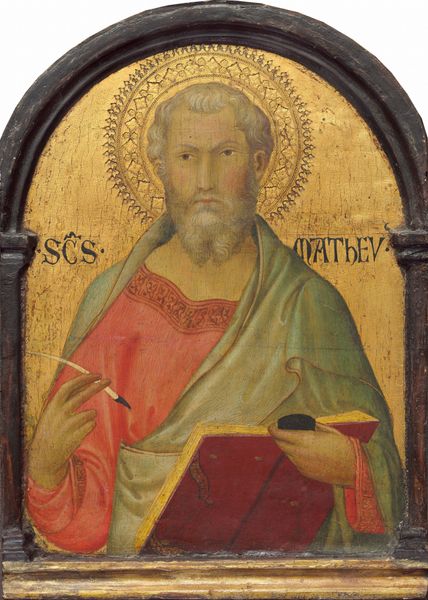
panel, tempera, painting
#
portrait
#
medieval
#
panel
#
tempera
#
painting
#
oil painting
#
portrait head and shoulder
#
men
#
history-painting
#
italian-renaissance
#
portrait art
Dimensions: Overall, with engaged (largely modern) frame, 35 x 22 in. (88.9 x 55.9 cm); painted surface 27 1/4 x 16 1/2 in. (69.2 x 41.9 cm)
Copyright: Public Domain
Curator: Before us, we see "Saint John the Evangelist," an intriguing tempera and gold on panel work crafted around 1320 by Segna di Buonaventura. It now resides here at the Metropolitan Museum of Art. What's your initial take on it? Editor: There’s something immediately striking about the texture. The rough gold leaf background really throws the relative smoothness of the figure into sharp relief, despite the aging and cracking we see in the paint. It really calls attention to the artist’s labor. Curator: I agree; let’s consider the historical framework. Remember that these images played a powerful role in religious life. St. John here, haloed and clutching what must be the Gospel, acts as an intercessor and model of faith. Who he represents and why he's important within broader power dynamics of that time needs unpacking. Editor: Absolutely. And the way he is rendered seems significant. Note how his robes—probably expensive, laboriously produced textiles—are draped and painted. This points us to the wealth of the church and its relationship to the labor and resources involved in devotional artwork. It certainly isn't about minimalism. Curator: His gaze and serene expression—the image asks viewers to reflect on his message and embody virtue. This contributes to our ongoing discourse surrounding religious identity in a space meant for everyone regardless of personal spiritual inclination. Editor: Definitely. Even beyond religious considerations, look at the craftsmanship. Someone spent an enormous amount of time creating and applying the gold leaf alone! Then look closely at the lines defining the clothing folds, indicating light and shadow. Curator: We must understand the visual language of its period, but also recognize the ways such images were—and remain—political. Segna di Buonaventura situates St. John as part of an ongoing conversation about salvation and moral fortitude while simultaneously mirroring the economic strata on which society relies. Editor: Indeed. The social context is right there in the materials, even in their distribution on the panel! From a distance we note only 'gold' but close-up we start thinking of mining, transport, guilds, trade routes... Curator: Reflecting on this piece through multiple lenses encourages critical analysis, which leads to a far greater, modern appreciation for art history than perhaps we thought possible going in. Editor: Yes, indeed. Examining materiality opens up the opportunity to see the human stories and labor woven right into the object.
Comments
No comments
Be the first to comment and join the conversation on the ultimate creative platform.

